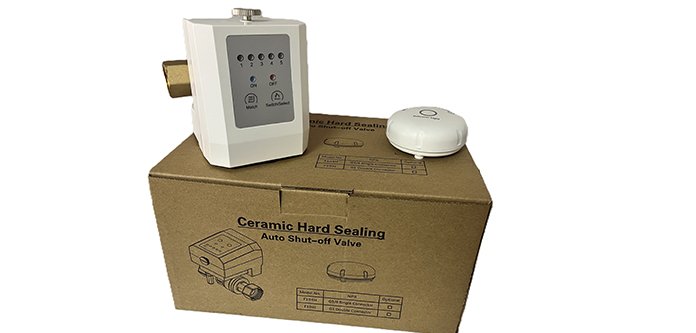Designed to prevent water leakage by automatically shutting off the water supply when a leak is detected, the Runxin F104 Wireless Leak Detection Valve is one of the latest offerings from Allmech. The company, a leading South African manufacturer of boilers and supplier of water treatment components, is the sole authorised dealer for Runxin products in southern Africa.
Anelia Hough, water treatment consultant at Allmech, says the wireless leak detection valve is suitable for a wide range of applications. “Water damage can be costly and disruptive, but the Runxin F104 leak detection valve offers a smart, automatic solution to safeguard your home or business. It can prevent damage in homes by detecting leaks in geysers, solar heaters, and water filtration systems, making it perfect for residential use, but it’s also something we think will be of use to our water bottling clients,” she says. “It helps prevent water damage and water loss where clients have installed water treatment plants by detecting leaks in key areas. Once the leak is detected, the automatic ceramic ball valve is closed to prevent any further water loss or damage to the area. It’s also great for clients using water cooling systems, or operating boilers, water softening systems, prefiltration systems and reverse osmosis (RO) or demineralisation (demin) plants.”
Other applications include hotels, offices and factories, where the valve can prevent water damage and water loss in areas such as production lines, laundries, and kitchens, where a high volume of water is consumed. “If water pipes burst during non-operating hours, the valve detects the leak and shuts off the water supply,” says Hough. “The valve can connect to multiple leak sensors, allowing real-time detection across different locations. It will also work well in place like gym pool rooms, where heating and filtration systems are located.”
She says companies supplying water treatment solutions, such as water softening systems, water filtration systems, prefiltration systems and RO or demin plants should consider supplying this valve as a value-add product to give their clients peace of mind. “Unlike conventional detection systems that only alert users to a problem, the F104 automatically closes the water supply when a leak is detected, preventing damage.”
How the system works
“The wireless water immersion detection valve needs to be installed in the most likely place for a leak to occur,” says Hough. “When the leak detector probe comes into contact with water, the indicator will flash and the main control valve will receive a signal, which will then close the ball valve. The whole process takes between 10-15 seconds. The indicator light on the unit will continue flashing until the alarm has been reset and the leak has been attended to. It also functions during power failures, making it suitable for areas with unstable electricity supply.”
The main control valve can support up to five wireless water immersion detectors. The unit is sold with one main control valve and one wireless water immersion detector, but additional wireless water immersion detectors can be purchased separately.
The valve uses DN20–DN50 fittings, which Hough says are common in residential and commercial plumbing. “The valve has a simple wiring setup that connects easily to the power adapter and leak detection sensors, requiring minimal electrical work. Once installed, the system operates without manual intervention, shutting off water automatically when a leak is detected,” she says. “After fixing a leak, the valve can be reset with a single button, eliminating complex reconfiguration or unnecessary callouts for repairs.”
The system does require maintenance checks to ensure it remains in good working order. Hough says this includes periodically checking the absorbent cotton in the leak detector. “If it becomes worn or contaminated, replace it to maintain sensitivity,” she advises. “You also need to ensure the ceramic ball valve remains free of debris or mineral buildup, especially in areas with hard water, and to regularly inspect wiring and power adapters for signs of wear or corrosion, particularly if the system operates in humid environments. Conduct routine leak simulations to verify the valve’s automatic shut-off response and reset function, and check the battery. When the battery charge is insufficient, the indicator light on the corresponding number of the main control valve and the “OFF” indicator light flash together with a buzzer alarm alerting that the battery is low. The battery generally lasts for approximately three years.”
The F104 can be integrated with multiple leak sensors, but its effectiveness across rooms or floors depends on building materials and interference.
